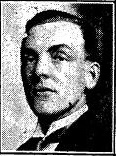
The 1950 United Kingdom general election was the first ever general election to be held after a full term of Labour government. The election was held on Thursday 23 February 1950. Despite polling over 700,000 votes more than the Conservatives, and receiving more votes than they had during the 1945 general election, Labour obtained a slim majority of just five seats—a stark contrast to 1945, when they had achieved a comfortable 146-seat majority. There was a national swing towards the Conservatives, whose performance in terms of popular vote was dramatically better than in 1945. Labour called another general election in 1951.

Battersea is a constituency in the London Borough of Wandsworth represented in the House of Commons of the UK Parliament since 2017 by Marsha De Cordova of the Labour Party.
George John Shaw-Lefevre, 1st Baron Eversley PC, DL was a British Liberal Party politician. In a ministerial career that spanned thirty years, he was twice First Commissioner of Works and also served as Postmaster General and President of the Local Government Board.

Clapham was a borough constituency in South London which returned one Member of Parliament to the House of Commons of the UK Parliament. It was created in time for the 1885 general election then altered in periodic national boundary reviews, principally in 1918, and abolished before the February 1974 general election. In its early years the seat was officially named Battersea and Clapham Parliamentary Borough: No. 2—The Clapham Division.
The Wansbeck by-election, 1929 was a by-election held on 13 February 1929 for the British House of Commons constituency of Wansbeck.
The East Norfolk by-election, 1939 was a parliamentary by-election held on 26 January 1939 for the British House of Commons constituency of East Norfolk.
The Wolverhampton West by-election, 1922 was a by-election held for the British House of Commons constituency of Wolverhampton West in Wolverhampton on 7 March 1922. It was won by the Coalition Conservative candidate Sir Robert Bird.
The Battersea North by-election, 1940 was a parliamentary by-election held on 17 April 1940 for the British House of Commons constituency of Battersea North in the Metropolitan Borough of Battersea.

Henry Cairn Hogbin was an English businessman and Liberal later Conservative politician.
The Battersea North by-election, 1946 was a parliamentary by-election held on 25 July 1946 for the British House of Commons constituency of Battersea North in the Metropolitan Borough of Battersea.
The Middlesbrough West by-election, 1928 was a parliamentary by-election held for the British House of Commons constituency of Middlesbrough West on 7 March 1928.
The Bath by-election, 1929 was a parliamentary by-election held on 21 March 1929 for the constituency of Bath in Somerset.
The Stockton-on-Tees by-election, 1917 was a parliamentary by-election held for the House of Commons constituency of Stockton-on-Tees in County Durham on 20 March 1917.
The Midlothian and Peebles Northern by-election, 1929 was a parliamentary by-election held in Scotland on 1 January 1929 to elect a new Member of Parliament (MP) for the House of Commons constituency of Midlothian and Peebles Northern.
The Southend West by-election of 29 January 1959 was held after the death of Conservative Party MP and renowned diarist Henry Channon.
This was a parliamentary by-election for the British House of Commons constituency of Stourbridge. Stourbridge was one of the Worcestershire constituencies, bordering Bewdley, where the Conservative Prime Minister, Stanley Baldwin sat.
The Isle of Thanet by-election, 1919 was a parliamentary by-election for the British House of Commons constituency of Isle of Thanet on 15 November 1919.
The Combined English Universities by-election, 1937 was a parliamentary by-election for the British House of Commons dual member constituency of the Combined English Universities 22 March 1937.

The Haggerston by-election was a Parliamentary by-election. It returned one Member of Parliament to the House of Commons of the United Kingdom, elected by the first past the post voting system.

The East Fife by-election of 1933 was held on Thursday, 2 February 1933. The by-election was held due to the death of the sitting National Liberal MP, Sir James Duncan Millar. It was won by the National Liberal candidate James Henderson Stewart.








